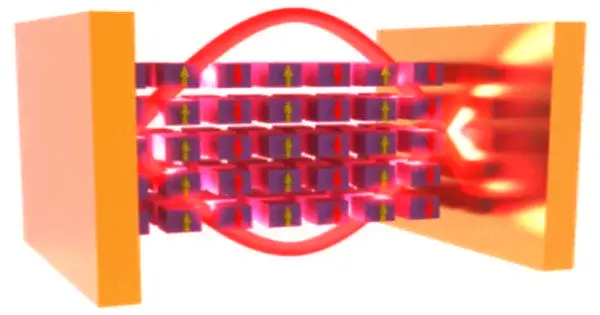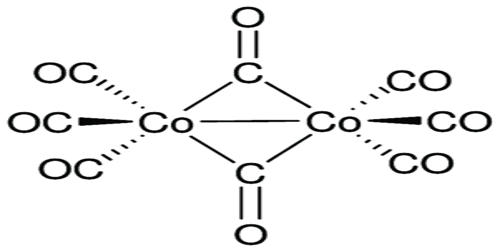In physics, quasiparticles and collective excitations are two closely related emergent phenomena that occur when a microscopically complicated system, such as a solid, behaves as if it were made up of different weakly interacting particles in vacuum.
For example, as an electron moves through a semiconductor, its motion is complicated by interactions with other electrons and atomic nuclei. The electron behaves as if it has a different effective mass when traveling in a vacuum. An electron of this type is known as an electron quasiparticle. In another case, the aggregate motion of electrons in a semiconductor’s valence band or a metal’s hole band behaves as if the material contained positively charged quasiparticles known as electron holes.
A new type of magnetic quasiparticle has been created by coupling light to a stack of ultrathin two-dimensional magnets. This achievement lays the foundation for an emergent strategy to artificially design materials by ensuring their strong interaction with light.
Implementing our approach with magnetic materials is a promising path towards efficient magneto-optical effects. Achieving this goal can enable their use for applications in everyday devices like lasers, or for digital data storage.
Vinod M. Menon
From The City College of New York’s Center for Discovery and Innovation and the Physics Department comes news of a new type of magnetic quasiparticle created by coupling light to a stack of ultrathin two-dimensional magnets. This achievement sprouting from a collaboration with the University of Texas at Austin lays the foundation for an emergent strategy to artificially design materials by ensuring their strong interaction with light.
“Implementing our approach with magnetic materials is a promising path towards efficient magneto-optical effects,” said CCNY physicist Vinod M. Menon, whose group led the study. “Achieving this goal can enable their use for applications in everyday devices like lasers, or for digital data storage.”

Dr. Florian Dirnberger, the lead author of the study, believes that their work exposed a largely unexplored realm of strong interactions between light and magnetic crystals. “Research in recent years brought forth a number of atomically flat magnets that are exceptionally well-suited to be studied by our approach,” he noted.
Looking ahead, the team plans to extend these investigations to understand the role of the quantum electrodynamical vacuum when quantum materials are placed into optical cavities. “Our work paves the way for the stabilization of novel quantum phases of matter that have no counterpart in thermodynamic equilibrium,” commented Edoardo Baldini, assistant professor at The University of Texas at Austin.
















